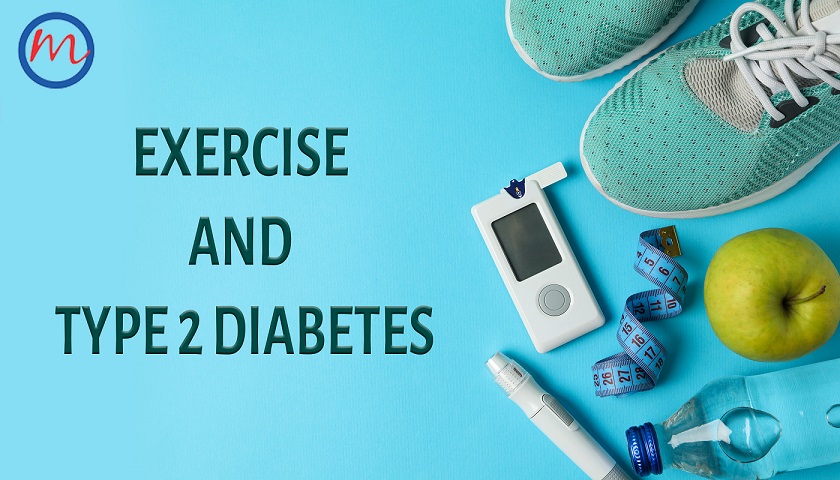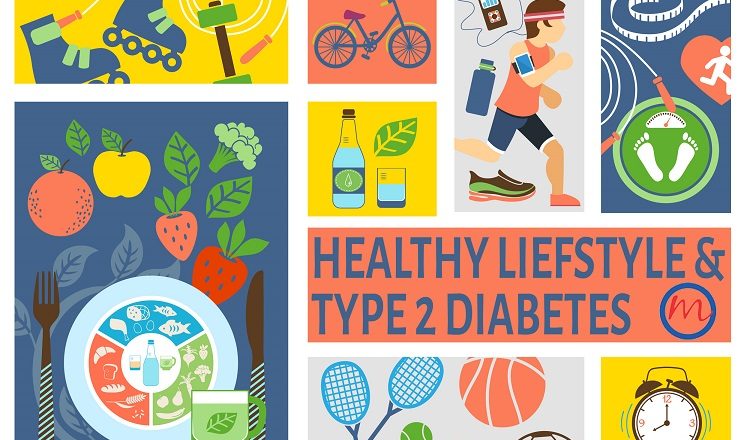You have been asked to exercise to combat your diabetes, but do you know exactly what you need to do, how much and how often?
Physical activity is key to preventing and managing type 2 diabetes. It is, however, the most neglected part of the diabetes equation. Many people with this chronic disease do not like to exercise. One of the major problems is that people with diabetes have lower physical stamina and performance threshold, especially in the elderly and those with complications. It becomes more difficult for them to maintain the moderate-to-vigorous exercise levels often recommended by physicians. And, more often than not, the difficulties lead to cessation of exercise therapy.
WHAT DOES PHYSICAL ACTIVITY MEAN?
The standard definition comes from the American Diabetes Association and the American College of Sports Medicine: physical activity is “bodily movement produced by the contraction of skeletal muscle that substantially increases energy expenditure”. When it is done with the intention of developing physical fitness, it is called ‘exercise.’
New research is shining the spotlight on spontaneous non-exercise activities for people with diabetes. In other words, a variety of daily activities in course of the day, that are not structured and regimented. These can be the work one does, activities for leisure, even trivial physical activities—anything that is not sleeping, eating or sports-like exercise. These can range from walking, gardening, typing, performing housework, undertaking agricultural and manual tasks and even fidgeting.
Here, we will discuss the range and variety of physical activities associated with blood glucose control. One word of caution: always check with your doctor before starting any new activity.
BENEFITS OF EXERCISE
Scientists have been able to confirm that the causes of type 2 diabetes are insufficient physical exercise and excessive body weight, especially, increased abdominal fat. People with diabetes have been found to have diets that typically contain high levels of lipids and sugars.
On the contrary, regular physical activity have been found to lower blood glucose levels, boost insulin action, counter insulin resistance, prevent and delay type 2 diabetes, lower the risk of heart events and death rate in patients with type 2 diabetes.
In general, many studies have highlighted how physical activity helps control weight, lower blood pressure, lower harmful LDL cholesterol and triglycerides, raise healthy HDL cholesterol, strengthen muscles and bones, reduce anxiety, and positively impacts quality of life. These are all important aspect of disease management in people with diabetes.
A LOOK AT RECENT RESEARCH:
- All forms of exercise have been found to lower HbA1c values by 0.7 percentage point in people with diabetes
- Resistance training (exercise that improves muscular strength and endurance) and aerobic exercise (where breathing and heart rate increase and can include activities like brisk walking, swimming, running, or cycling) lower insulin resistance in previously sedentary older adults with abdominal obesity at risk for diabetes.
- People with diabetes, who walk at least two hours a week are less likely to die of heart disease than those who don’t. And those who exercise 3-4 hours a week, cut their risk even more.
- Women with diabetes doing moderate to vigorous exercise (including walking) at least four hours a week have a 40 per cent lower risk of developing heart disease than those who do not.
NON-EXERCISE DAILY ACTIVITIES
For people with type 2 diabetes, many types of physical activity have been found to have a positive effect. Called Non-exercise Activity Thermogenesis, NEAT is now believed to be a critical component in how we maintain our body weight and/or develop obesity or lose weight. Studies also suggest that these activities also increase metabolic rate and insulin sensitivity, favour reduction in waist circumference, aid in lowering blood pressure in patients with type 2 diabetes, and helps increasing high density cholesterol.
Walking is the most common form of daily activity that has a clear beneficial link with reducing the risk of type 2 diabetes, cardiovascular disease and death. Walking for at least 30 minutes a day has been shown to halve the risk of type 2 diabetes. Walking has also been associated with lower death rates. In contrast, evidence regarding other daily physical activities such as gardening and housework in patients with type 2 is limited. Incorporating NEAT into interventions for type 2 diabetes shows promise and warrants further investigation.
THINK OF YOGA
Yoga can be a good choice if you want a workout that is gentler on your body. Research shows that compared to no exercise, yoga helps lower your weight, drops LDL “bad” cholesterol and raises HDL “good” cholesterol. Since it is both a physical activity as well as a mental one, it can take care of your daily stress.
How much yoga is enough? There are no set guidelines, but aim for at least 150 minutes each week. Try asanas that will make you breathe harder than normal but not so much that you can’t talk. Avoid inverted poses, that may put pressure in your eyes. If you feel any pain or discomfort, stop. And always eat a light snack before starting.
SOME GUIDELINES FOR EXERCISE
Most people with diabetes can start a walking programme without having any tests. To be on the safe side, however, have a word with your doctor first. This is especially pertinent for those who have had diabetes for 10 years and more and have not been active.
- Time it right: the best time to exercise is 1-3 hours after eating, when your blood sugar level is likely to be a bit higher.
- Exercise caution: if you use insulin, do test your blood sugar before you start exercising. Make sure your blood sugar level is stable.
- Know your limits: check your blood sugar before and after exercise to see how your body responds to exertion.
- If it’s too low: if your blood sugar level is below 100 mg/dL before exercise, have a fruit or a small snack before you start, to boost your sugar levels. It will also help you avoid hypoglycaemia
- If it’s too high: experts also caution against exercising if your blood sugar is too high (e.g. over 250), because it can shoot up higher.
- Slow and steady: if you are new to exercise, start with low-impact activities (walking, bicycling, swimming) before increasing your daily regimen gradually.
- End right: check your blood sugar levels afterwards, especially if you carry out strenuous workouts. If you are on insulin, your run the risk of developing hypoglycaemia rises, especially after six to 12 hours after exercising.
- Protect yourself: your feet and eyes must be protected. Wear shoes that won’t give you blisters, so that don’t end up with skin ulcers. Avoid putting pressure on your feet, if you have nerve pain or loss of sensation, so that you don’t get ulcers or fractures. Don’t lift heavy weights that can increase blood pressure, and bleeding, in your eye.
- Always be prepared: have water and snacks handy when you exercise. Keep hard candy or glucose tablets with you, that can quickly boost your blood sugar if it gets too low.




